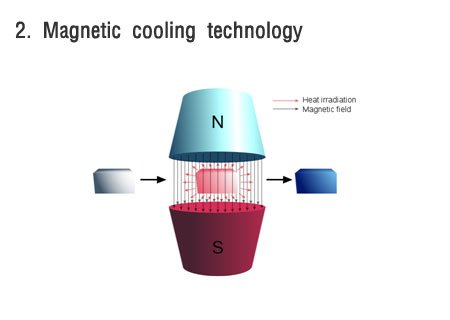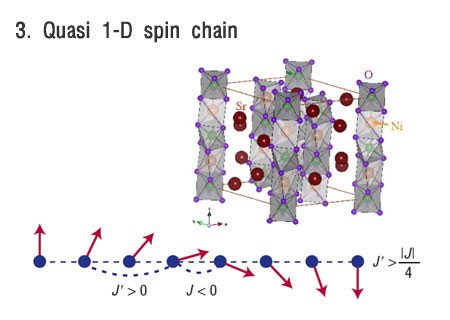Research Topics
Energy Materials & Quantum Physics Lab.
에너지소재 양자물성연구실
Prof. Rhyee’s laboratory is comprehensibly investigating the thermoelectric, magnetic, and superconducting materials and their exotic physical properties. We’re interested in the broad condensed matter physics problems ranging from fundamental understanding to practical applications. Many contemporary condensed matter physicists have been devoted to understand the complex strong interaction among spin-charge-orbital-lattice degrees of freedom. Our first goal is to deepen fundamental understanding on the strongly correlated electron system such as the low dimensional quantum nature of electron and spin, topologically protected electronic behavior, and unconventional magnetic and superconducting properties. From the fundamental research on the condensed matter, we’d like to extend the horizon of the research to practical applications. As of one solution to the global energy and environmental crisis, we focus on the waste heat recovery and environmentally friendly cooling technology by the research on the thermoelectric, magnetic cooling, and high thermal conductive materials development. We believe that our research will change the world and protect the earth by conducting the technologies. In order to do it, we’re full of a passion for the success!
|
 |
Thermoelectricity can be used as an energy conversion technology from thermal energy into electrical energy or vice versa. Due to the increasing demand on the renewable energy development, the thermoelectric power generation would be a promising candidate for a waste heat energy harvesting. The thermoelectric performance is characterized by the dimensionless figure of merit, defined by ZT=S2σT/κ, where S, σ, T, κ are the Seebeck coefficient, electrical conductivity, absolute temperature, and thermal conductivity, respectively. In order to improve the thermoelectric performance we should increase the power factor (S2σ) as well as decrease the thermal conductivity (κ), simultaneously. Currently, it is known that the ZT value can be improved by two ways. One way is to maximize the power factor by the quantum confinement effect and the other way is to minimize the thermal conductivity by scattering phonon with preserving electronic transport. From the intensive investigation of this research we’ll do the breakthrough research on the thermoelectric materials development for the waste heat power generation and for the environmentally friendly refrigeration system.
|
|
 |
Magnetic refrigeration is a cooling technology using the magnetocaloric effect. While the thermoelectric cooling is operated by applying electrical voltage, the magnetic refrigeration is driven by applying magnetic field. With applying magnetic fields, randomly oriented magnetic spins align along the magnetic field’s direction, thereby decreasing the magnetic entropy and heat capacity. From the repeating magnetization and demagnetization processes with heat transfer from the material into outside of the system, the irreversible magnetic entropy change gives rise to the magnetic cooling. The issues of the magnetocaloric materials development for commercial uses are the higher critical temperatures than room temperature and the giant spin entropy change near transition temperature. For the fundamental materials research, we’ll study on the crystalline field effect, magnetic phase transition, and structural phase transition for various magnetic materials.
|
|
 |
In many of the high integration devices, the thermal management is a big issue to obtain high device performance. The surface temperature of devices increases steadily due to the increasing needs of high device integration. Hotter devices make lesser performance and more failure. As well as chip device application, high thermal conductive materials can be used in the areas of space science, opto-electronics, and industrial thermal management. The insulating high thermal conductive materials have a great potential to be used as an IC chip substrate material. Conventional high thermal conductive materials are the Aluminium alloy, AlN, SiC, diamond, graphite, and carbon nano-tubes; most of them are electrical conductive materials. On the basis of high lattice thermal conductivity, here I propose an additional new degree of freedom of thermal transport; that is spin thermal transport. In usual cases, the spin-mediated thermal conductivity is smaller than those of the lattice thermal conductivity. However, at certain cases, the spin thermal conductivity exhibits huge value compared with lattice thermal conductivity. In a Heisenberg XXZ model, the spin excitation can form a magnon. The low-dimensional magnon transport carries spin entropy and shows exotic physical properties such as quantum critical behaviors. By employing spin entropy transport in the low-dimensional spin liquid, the high thermal conducting materials development may realize possible practical applications as well as scientific interest.
|
|
 |
Low dimensional behavior of 2D or 1D electronic transport makes unconventional properties such as charge density wave, Peierls transition, Luttinger liquid, and so on. They are the result of strong electron-phonon coupling and electron-electron interaction. Prof. Rhyee proposed that the charge density wave or Peierls lattice distortion plays a key role in high thermoelectric performance. Understanding on those exotic phenomena is very important to find new thermoelectric materials as well as fundamental physics problem. Because those behaviors are related with metal to insulator (MIT) and/or metal to semiconductor transitions, the raised issues on this subject are metal insulator transition and structural distortion of lattices. Concerning the spin degrees of freedom, the spin density wave and spin Peierls behaviors should be investigated as a counterpart of charge degrees of freedom.
|
|
 |
The research on the magnetic and unconventional superconductor is very important to understand the high temperature superconductivity. Even though much attention has been devoted to understand the coexistence of magnetism and superconductivity, it is far from the complete understanding. It is very surprising that the itinerant ferromagnetic superconductors show spin triplet state rather than spin singlet state, which is contrast to our common knowledge for the conventional superconductivity. It has not been fully understood the pairing mechanism of those compounds until now. We’ll carry out the research to understand the magnetic and electronic ground states, pairing mechanism, and the coexistence of superconductivity and quantum critical behavior by the developments of new materials.
|
|
|
